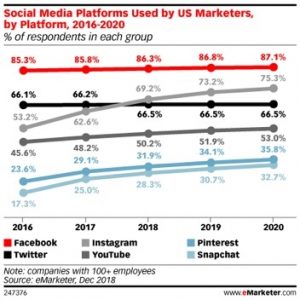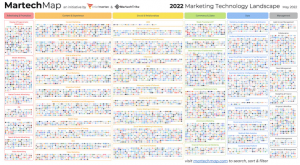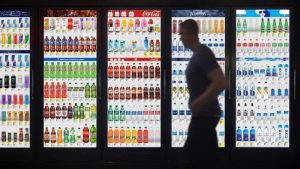If there is any medium on social media that continues to dominate, it is video. Most brands are fully aware that if they want to establish any kind of meaningful presence they have to be creative with video. And with the advent of new tools every year, tools that make creating high quality videos quite simple, there is no excuse anymore either.
And now one of the best platforms for video, Twitter, has pulled up a bit of research that shows how it sees video changing, and how best to manage these changes. It’s an intriguing little piece of research, and we reckon that the ideas expressed in it can be applied to any platform, not just The Blue Bird.

The research has been well documented by Twitter, and perhaps one of the most telling aspects of the work has been Twitter’s insistence that they are focusing on a ‘news feed environment’.
Twitter has long protested that its service is all about news. Obviously, it is aware that there are certain users out there who do not consider Twitter to be anything but a place to troll and spam people, but Twitter has held onto its vision of being a news service.
The effect of video
Twitter maintains that video works well and it works well when it is in a timeline:
“Video is effective within the timeline. Autoplay viewing within the timeline generated slightly higher memory responses vs. videos watched full-screen. This viewing experience is impactful for brands who also benefit from branding and Tweet copy being visible.”
We’re guessing that ‘slightly higher memory responses’ simply means that videos in timelines are more memorable than those you need to pull up for a better view. The branding and copy thing make sense. Essentially Twitter is stating that brands need to be very explicit and clear on their message alongside the video.

The length of a video
This is an old chestnut, and if you spend the next ten minutes getting off this post and searching Google for ‘ideal video length on social media’ or something like that, you will probably discover that there are hundreds of different theories. But Twitter has undertaken some real research here and it is clear on the ‘ideal’ length of a video.
It feels that short videos of 15 seconds or less are most effective. The research compared this with 30 seconds or more and found that ‘memory encoding’ works better with the shorter timespan.
This isn’t a great surprise to us, because, for one thing, Twitter is very quick and dynamic. But we also recognise that short and sweet is better for anyone who is using social media these days. There is so much to get through, and having a powerful short video (with branding and good copy surrounding it) is obviously a good thing.
Interestingly, it compares the 15 second video to TV ads:
“This is specific to Twitter as TV sees the opposite trend with 30 seconds being most effective vs. shorter formats.”

We wonder if other platforms such as Facebook will see benefits with shorter videos, or are the other platforms in the same boat as TV?
Sound?
Another perennial subject in pretty much every sphere of social media is sound in video. In fact, along with video length, this is probably the next big issue. Twitter has broken the argument down, and it states that the first 3 seconds of a video do not need to have sound to have a good impact.
However, the rest of the video needs sound to gain any kind of value (‘sound turns up all the key metrics’). In addition to this, Twitter states that dialogue has more of an effect than music might.
The research went even further, almost in a mystical way. It talks about the ‘mindset’ of Twitter users at certain times of the day. Perhaps unsurprisingly (when you think about it), Twitter says that tweets that are detail oriented and instructional are more relevant in the morning.

While those tweets that are created to pull out emotions tend to work better as the day goes on. If this means that Twitter users are gibbering emotional basketcases at night, it is not explored.
The good stuff
Twitter also covers some very good stuff as part of the research. A brand that is using video or considering using video needs to take note of what the research brought to light.
On topic
Topical content is not always easy to pull together. You often have to create a team or at least one person in a company to keep an eye out for stuff that is topical. Then, you have to align that with creatives to develop content that is powerful, without seeming opportunist. You need to avoid desperate marketing, in other words.
But Twitter acknowledges that topical content gets the biggest impact. It says that topical stuff tends to be viewed after those first crucial three seconds (the danger zone for poor quality videos is after three seconds). So if you’re on any platform, and you’re using video, keep an eye out for the topical stuff. It makes sense.
Stories. But quick

Twitter also says that an early and easily identifiable story arc (in layman’s terms that simply means the story is good from the start) makes for better responses from the audience. Catch them early, in other words, and keep them hooked.
And people
We all know that social media is largely driven by emotion of some kind. This is especially true in video content. According to Twitter, there’s a 133% gain in ‘emotional intensity’ compared to videos that don’t have people in at the start. Basically, we like seeing real people (even though they’re probably acting) in our social video content.
So what?
The study used nearly 130 people aged between 18-49. The research is useful for any brand that has video as part of its social media strategy. Agencies that wish to make progress with client vidoes should look at the above points.
Generally speaking, keep people front and centre, focus on telling a story, and ensure that branding and copy are 100% amazing.
And we think the length of videos is currently one of the most important aspects of social media marketing, whether you’re on Facebook, Twitter or any other platform that allows moving images. As always, experiment. Use your analytics to work out what is actually making sense, what’s helping you cut through the noise.
Need some metrics analysis? Or just amazingly detailed metrics that help you deliver better social? Try a Locowise 14 day trial. No cost, just social goodness in every drop.
Digital & Social Articles on Business 2 Community(34)





